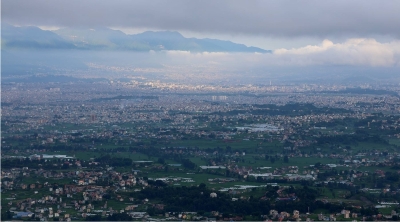Dhaka summit - The challenges facing the leaders
The 13th South Asian Association for Regional Cooperation (SAARC) summit has been scheduled to start in Dhaka tomorrow. This news has attracted the attention of intellectuals, professionals and politicians of the region. The general public of the South Asian region remains uninformed or indifferent to the news, as the SAARC has not done anything concrete to ameliorate their living standards. Those who are interested in watching the preparation for the summit have been wishing for its success and hoping that it would adopt certain plans and programmes which would prove useful to the deprived sections of societies in the region. People in Nepal have higher expectations from the upcoming summit, particularly because, after a lapse of fifteen years, the King is leading the Nepali delegation to the regional forum. Their hopes have been further increased because the official media has been orchestrating the view that because of the high level of delegation the summit is going to be of great success to Nepal.
The Charter of the SAARC specifies the attendance of either the head of state or the head of government at the summit meeting. The King is the head of the present government in Nepal. The King’s attendance in the summit is not a matter of controversy.
However, the question remains — what would be the achievement of the SAARC summit in Dhaka? There is a general perception among the informed section of the people that the SAARC has been moving at a snail’s pace and, therefore, may not be in a position to deliver the goods. Twenty years of its existence has not been realised by the common masses but unfortunately they do not see any tangible results in their day-to-day life. Any organisation that does not affect the life of the general public is bound to be looked at sceptically.
Any regional organisation, in order to touch the life of the common people, has to provide some type of relief to the people of the region. South Asia happens to be one of the poorest regions of the world. Poverty has been identified as one of the prime areas to be dealt with in order to provide relief to the masses. In spite of several workshops and deliberations by eminent persons time and again, the poverty syndrome remains unaltered and the regional populace continues to suffer.
South Asia has great human and natural resources, but due to the lack of proper utilisation of its vast resources, it remains backward and poor. The South Asian region has been an area, which has more interaction with countries outside the region and least interaction among themselves.
There are also many barriers to trade between the SAARC member countries. With a view to increase intra-regional trade and investment, SAFTA has been conceived. However, there is no hopeful sign that the summit would adopt the SAFTA arrangement. The inconclusive ministerial meeting held in Kathmandu last month does not trigger any kind of hope. The major issue before the summit is the adoption of the SAFTA agreement. Other important items before the summit are the issues of combating terrorism and development of infrastructure. The third SAARC summit in Kathmandu had adopted a convention on combating terrorism. All the members have not ratified the highly praised convention and so it remains to be implemented. The summit’s success depends on adopting measures to implement the convention on combating terrorism. However, in the name of combating terrorism, genuine grievances regarding the marginalisation of communities or regions should not be ignored. For combating terrorism, the causes of conflict have to be addressed.
The building of infrastructure is the most important aspect of promoting inter-regional interaction and cooperation. Shortest routes connecting the whole of the region for the movement of the people and cargoes have to be identified and improved. There is a good opportunity to use the cheapest means of transport through waterways in South Asia, which needs the attention of the leaders for exploration and exploitation. While building the infrastructure in the region its connection with countries outside the region has also to be kept in mind. The regional trading arrangements could also be used for extra-regional trade.
The summit carries the hope of more than one-fifths of the world population. There are legacies of mistrust among many of the SAARC members. The hope of salvation from the past acrimony lies in the success of the summit. Let’s hope SAARC leaders would realise the futility of spending their money on guns and would start shifting the investment on poverty alleviation.
All has welcomed the recent development in India-Pakistan ties. The people in South Asia welcome it more than any other people of the world because the success and progress of SAARC depends very much on India’s role, and Pakistan, as the second largest SAARC nation, has its own importance in strengthening the SAARC process.
Upadhyay is a former foreign minister





